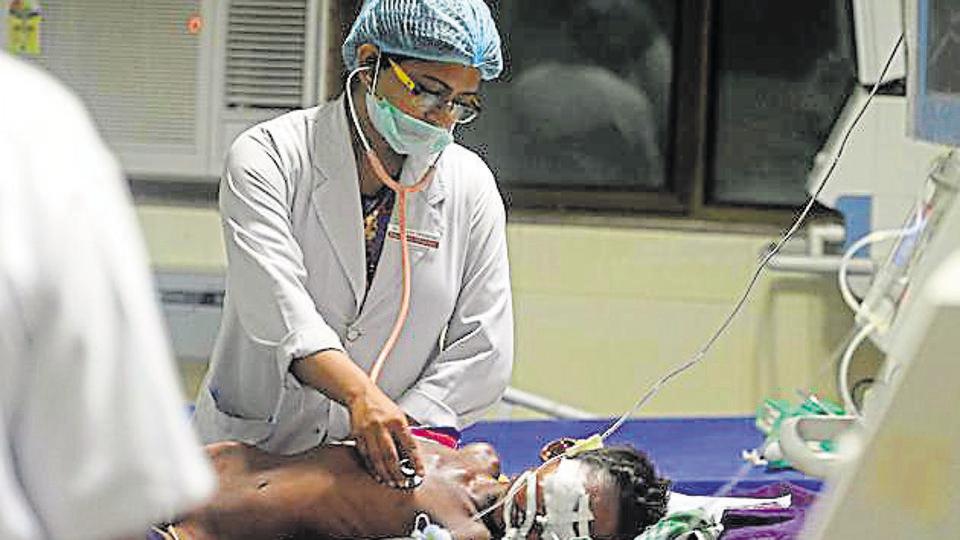UHC in India: Insights from Indonesia and China
The article has been authored by Madhurima Nundy, fellow and Pankhuri Bhatt, research analyst, Centre for Social and Economic Progress (CSEP), New Delhi.
Current attention on global health should not take attention away from Universal Health Coverage (UHC), a global development agenda endorsed by countries, including India. India has taken a step towards UHC through Ayushman Bharat, with Pradhan Mantri Jan Arogya Yojna (PMJAY) being the main programme to increase financial protection towards hospitalisation for the poor and the near poor through a government subsidised scheme. While a step in the right direction, insurance coverage in India remains limited in terms of breadth (one-half of the population still needs some form of coverage) and depth (only inpatient services are covered).

UHC entails many issues, and while the idea is comprehensive, it has assumed a narrow interpretation in many contexts, where financial reforms in the form of insurance have become a dominant focus to expand coverage, hence ignoring a systemic view. There are several key issues that India must consider while taking the path of insurance as a means to UHC – providing coverage to the unorganised sector; financial sustainability of insurance; comprehensive coverage which is well-integrated with primary health services and; systemic reforms for an equitable, efficient and responsive health services.
Different country contexts have found different pathways to UHC. Indonesia and China for example, took the insurance path to provide financial protection to its population. Each had a strong political commitment toward UHC – China at present provides coverage to 98% of the population, while Indonesia has reached 82% coverage. Both countries faced the dilemma of extending health insurance to the unorganised sector. While the formal sector was fully covered, providing coverage only to the poor led to mistargeting, with one in five members being from the top income quintile, as was seen in Indonesia. To universalise coverage, China committed to provide 80-90% subsidies to all residents in rural and urban areas who were self-employed, not in formal employment, unemployed and their dependents (70% of the population), rest of the premium amount (10-20%) was to be paid by the individuals. Even though participation was not mandated, participation became universal due to the government commitment to subsidise and door-to-door campaigns by the local government. Indonesia had no government subsidies for this section (30% of the population) and enrolment was voluntary. Inconsistent income levels amongst informal sector employees directly impacted their capacity to make regular premium payments, leading to pile up of pending premium payments. Such payments were done only when there was an impending health expense, reinforcing adverse selection. Accordingly, Indonesia is yet to reach universal coverage.
While adverse selection and moral hazard is expected to manifest in any insurance scheme, this is particularly challenging for countries with weak regulations and low government fiscal capacity leading to concerns of its financial sustainability. In the case of China, the government has to have the fiscal capacity to sustain the insurance since it is contributing higher proportion of the premium amount as subsidy. In Indonesia, the lack of government subsidies and voluntary enrolment for the unorganised sector has created a complex situation where individuals enrol only when they seek care, thus leading to deficits.
Varying country contexts have demonstrated that despite a comprehensive benefit package including outpatient and inpatient services, a weak referral system can lead to a hospital-dependent system, increasing costs of care. Overdiagnosis and overprescribing by the private hospitals empanelled under the national insurance scheme is also common; an experience noted in both Indonesia and in the highly commercialised public sector hospitals in China. Lack of integration of primary health services including preventive and promotive services with insurance schemes has fragmented systems, leading to poor continuity in care and cost-inefficient systems.
Experience from across the world also demonstrates the importance of comprehensive reforms, which include strengthening and addressing supply-side constraints. Both China and Indonesia had to eventually address the underlying supply-side challenges – including regulating functioning of public and private providers, rational utilisation of technology and drugs, reforming medical education to create a primary level cadre. Both countries also undertook governance reforms at the central level to merge institutions for better coordination and accountability.
While India traverses a similar path, to close coverage gap, commitment to increasing public financing is important. India’s large unorganised sector, with people continuously falling in and out of poverty makes it difficult to target poor and near poor. This can also result in mistargeting thus excluding many vulnerable people. Benefit coverage has to be comprehensive to include preventive, curative, rehabilitative services to ensure continuity in care, rational practices and a cost-efficient system. Universal coverage through insurance without addressing reforms in other areas has not ensured free, equitable services or quality care in other countries. Coverage through insurance cannot be seen as a panacea for attaining UHC without bringing in systemic reforms in governance, regulating provisioning and in adequate supply and rational distribution of human resources, drugs and technology.
The article has been authored by Madhurima Nundy, fellow and Pankhuri Bhatt, research analyst, Centre for Social and Economic Progress (CSEP), New Delhi.
All Access.
One Subscription.
Get 360° coverage—from daily headlines
to 100 year archives.



HT App & Website







